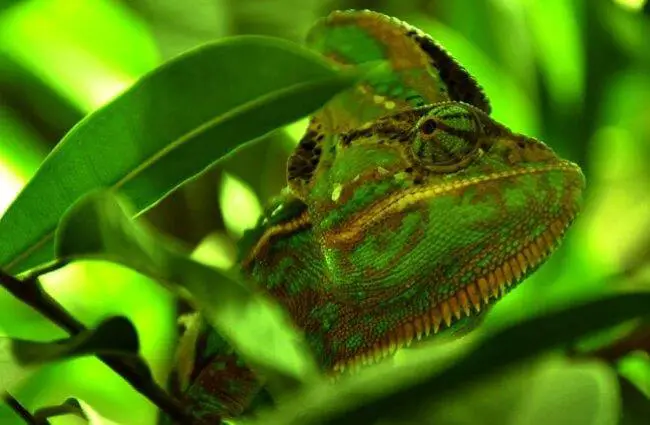There are 160 different species of Chameleon, and half of it can be found in Madagascar, and the rest can be found in Sri Lana, Africa, South Europe, and South Asia. Chameleon is known to be an aloof type of animal that belongs to the family of lizards. However, beginning keepers are attracted to adopt a chameleon because of their adorable characteristics and for their low prices.
Here are the good-to-know facts about Chameleon:
- They are different because of their colors, and there’s a lot of reasons why they change colors. Some chameleons don’t change their colors. But some have the capability to change their color depending on their mood, and others can adopt the color according to their environment.
- Changing their colors is their way to communicate with other chameleons and to protect their territory. Males are usually more colorful than female chameleon. They turn their color to a darker one to get more sunlight when they are cold. Or they choose to change their color and match their environment when they know they are about to be attacked by their predator.
- Another unique quality of chameleons is that each of their eyes can move from complete alternate movement, meaning they can search for their prey all at once in different ways. And they have awesome eyebrows.
- They can be easily found in UV light because of the bone on their head, by the animals that have UV vision.
- The most amazing quality of chameleons is their tongue, which is twice longer than their actual body size, and it is very sticky, it can hold up to three times their weight. Imagine holding something thrice your weight just using your tongue! That’s how amazing a chameleon is.
- They are zygodactylus, where they are also able to grip on branches on both sides because they have fingers that help them climb on trees.
Why Chameleons are Only for Advanced Keepers
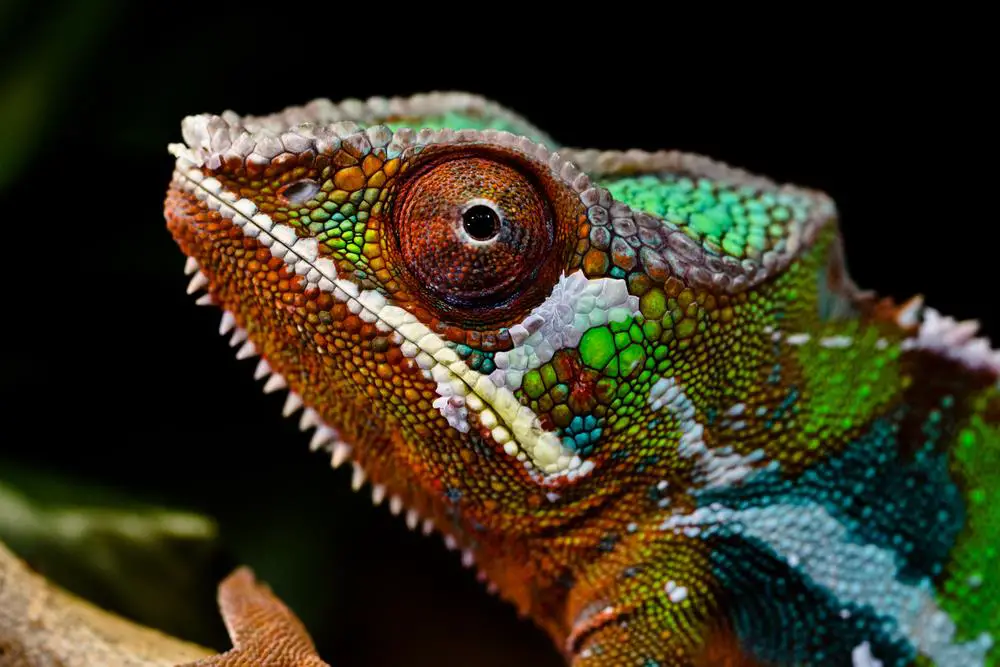
Yes, they have a low price when you buy them, but one thing is for sure, and that is they are high maintenance kind of pet. Aside from the excitement, you feel when you first have a chameleon, they are not fit inexperienced pet owners.
They are different from cats and dogs as a pet; they are difficult to maintain for a beginning keeper of a reptile, chameleons should not be the first reptile they should pick. Because when you pet a chameleon, all you need to do is to be tough enough to properly handle them. Chameleons require a lot of things and work. To decide on having your own chameleons as pets, here are some pros and cons to see if you are really to own one.
Pros When Caring Chameleons
- They are adorable
They are good looking because of the fact that they can change colors.
- They are low-energy pets
They are slow-moving pets and have low energy. They do not oblige their owner to give them so much attention to make them contented as long as they give them their enclosure set up properly that contains plants and branches to climb on, and provide them food inside their cage and has their source of water. You can keep on making your usual activities when you pet a chameleon; it is just that you have to make sure you maintain and monitor their supplies.
- They live longer
Chameleons tend to live long when they are under the custody of an expert keeper. Usually, in the wild, they can last in just 2 to 3 years, but when they are kept as pets, they can live a decade, which is quite long for a reptile to stay alive.
- They weigh less
Their weight depends on their size and health and varies from their different species. Typically, male chameleons weigh from 85 grams to 170 grams, while females weigh lighter than male chameleons of about 85 grams to 118 grams only.
- Silent creatures when left alone
Chameleons are living in their calmest state; they are not sociable. Even though these chameleons are known for being aggressive, if they are given their necessities, they tend to remain quiet and stay still. They are territorial, so put one chameleon in one enclosure at a time to avoid chaos.
- They are affectionate
They love to have proper care from their owners regarding their habitat and food they are used to live and it. There is nothing to worry about as long as you provide them these two, they will not bite you and even don’t care what you are doing.
Cons When Caring Chameleons
- Body Odor
Above any other things, they do not have any odor, but when chameleons wipe their jaws to the tree branches, they will smell a foul odor like rotten meat, and by that, they can entice their prey and catch them easily. Furthermore, they defecate a white colored poop and range like human urine.
- Health Issues
Chameleons should be taken care of by an expert keeper because their habitat should be managed accordingly. Because even though they are maintained, there’s still health issues that can come to their ways such as Respiratory Infection, Mouth Infection, Edema, Shedding, Tongue Retraction Problem, Injuries, and Egg Binding.
- Temperature Adaptability
Various types of chameleons, like different sorts of temperatures. So the owner should take care of their environment by using a thermometer to check the temperature inside it. A sprinkler of water is needed to balance the cozy and misty type of temperature. A chameleon can tolerate a temperature of at least 70 degrees Fahrenheit to 70 degrees Fahrenheit.
- Diet Needs
Commonly, chameleons eat insects. Such as crickets, wax worms, and mealworms. They needed to be gut loaded first with the nutritious foods before they are to be given to the chameleons. For large chameleons, different kinds of mice like the newborn mouse or the pinkie mouse. You can also give them veggies like lettuce, mustard, turnip, collard, and dandelion greens that are cut into smaller pieces. Supplements are also important to this type of reptile. They need multivitamins and calcium with vitamin D3 in the form of powder, to just sprinkle to their food. Do this to your chameleons to avoid calcium, vitamin a, and vitamin D# deficiencies. Their water should be given in a dripper or bottle that has very slow drops from leaves where a chameleon can drink water because chameleons are not likely to drink in a bowl of water.
- Special Lighted Environment
There should have an ultraviolet bulb present in their enclosure because it helps them digest their food well, and heat is the primary source of their life because it regulates their body. There can be no problem with the chameleons when they are provided good care and habitat where they are used to live.
General Care for Your Chameleons
It is important for a potential owner to know how to properly take care and what are the things to provide to help their Chameleon live longer and to avoid harming their lives. That is why it is said that Chameleons are only for advanced keepers because Chameleons are difficult to handle, and they have unique features that everyone doesn’t know and difficult to observe in just a short period of time.
1. Enclosure
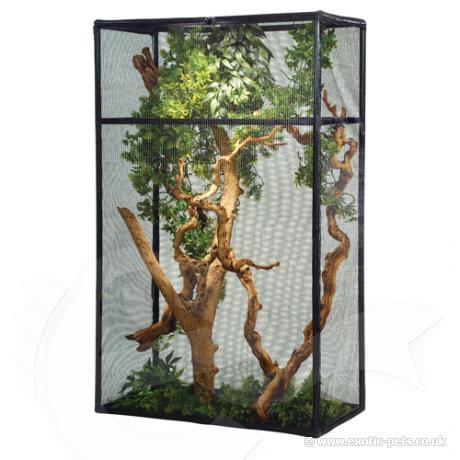
Chameleons should have a proper habitat inside your house. The size of their cage must accommodate them and have enough spaces for their activities that they are used to. It is best that you put a plant in the middle of their cage and some old branches and veins around it because chameleons love to climb and plant is their natural habitat.
Make sure the enclosure can be easily cleaned and avoid placing in busy areas of the house. Provide them a cover where they can hide whenever they want to. Chameleons are aloof when they are surrounded by people, and they are extra hesitant to their surroundings. Consider that they are easily stressed when they see their reflection, so their enclosure must be a screen enclosure to also have proper ventilation.
The primary reason for the stress of a chameleon comes from being placed near too many noises such as traffic and movements of vehicles outside and that they have a cage mate. Keep in mind that they cannot tolerate living with another chameleon in one enclosure.
2. UV-B Spectrum Lighting and Heating

Chameleons require exposure to UV-B full spectrum of light for 12 hours a day. The common mistake of the new chameleon owner I that they don’t know what wavelengths of light are the primary source of their life and energy. Without exposure to a full spectrum of light, they are not able to develop the calcium in their bodies.
It may result in having a condition called metabolic bone disease or secondary nutritional hyperparathyroidism and is the number one cause of death and weaknesses of chameleons under the care of humans. Chameleon’s daytime temperature must be 78 to 87° F and night temperature for 65 to 75° F. And the natural source of light is sunlight. So provide some branches in their walls because they might reach out for the sunlight
3. Water and Humidity
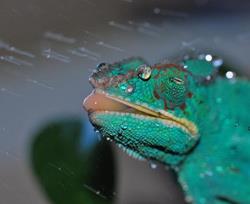
Chameleons usually drink from the water droplets coming from the plant and never on water bowls. There are some ways to have water on their enclosure. First, they must have a dripping system to have a little bit of water at a time to their habitat, or they might be some cases where you put ice cubes at the top of their enclosure to slowly drop water while they are melting. There are some misting devices and drip systems that can be bought in the market. The humidity happens to be when they have a plant inside their enclosure and must be monitored every day because it needs to be 50 to 70%
4. Diet

Chameleons are generally insectivores. The primary source of their food is insects, yet they should be given in different ways of feeding. Aside from insects and worms, veggies and fruits should also be included in their diet.
Avoid feeding those beetles and worms because it is hard to digest and occasionally give them mice as a treat. Sprinkling a powder supplement of calcium is best in every other day of feeding. It is also best to feed them in bowls. And better to chop them finely. Insects must be taken away and limit its time inside the enclosure.
5. Substrate

The bottom part of their enclosure must contain a newspaper sheets because it can be easily taken away from the enclosure for cleaning purposes and put some soil to also absorb the water droplets and help the plant grow. Avoid beddings that can hold extra moisture because it can stimulate bacterial growth and fungal growth.
6. Diseases

Chameleons are prone to viral infections, fungal, and bacterial infections. You can get rid of these infections by maintaining the cleanliness of their enclosure and removing uneaten prey every day.
They are subtle to different toxins in their environment and keep them away from the aerosols, household cleaners, and other chemicals that can harm their health. There are also human diseases that can be transferred to your chameleon. So be aware of your health and be cautious to anyone who gets near to your pet to protect them from different diseases.
Preventive Care
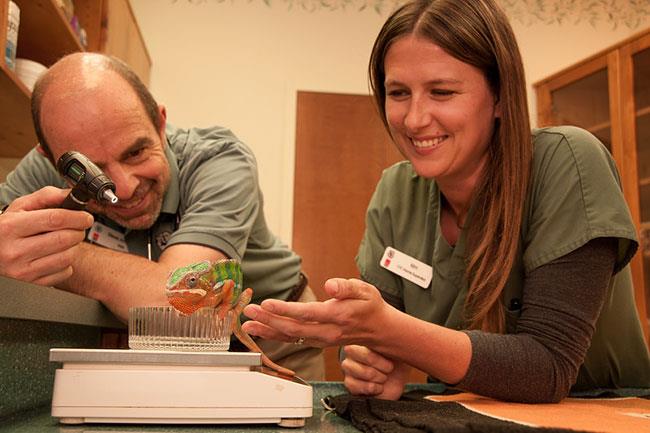
Allow your pet to have a 6 month or annual check-up to see if they are healthy and have them fecal examination to check if there are gastrointestinal parasites present in their body and have proper medication. Their blood test must come every other year or 3 to check if they have an internal disease. Ask your vet for further notice and any other concerns about the health and care of your chameleon.
Conclusion
Caring for chameleons is only recommended for advanced keepers because of the in-depth care they need. They are prone to viral and bacterial infections. That’s why a pet owner needs to have the right knowledge, skills, and attitude when caring for a chameleon. You need to provide their basic needs and even special needs to ensure they will thrive and live to the fullest. Always talk to an expert before adopting or buying one.

